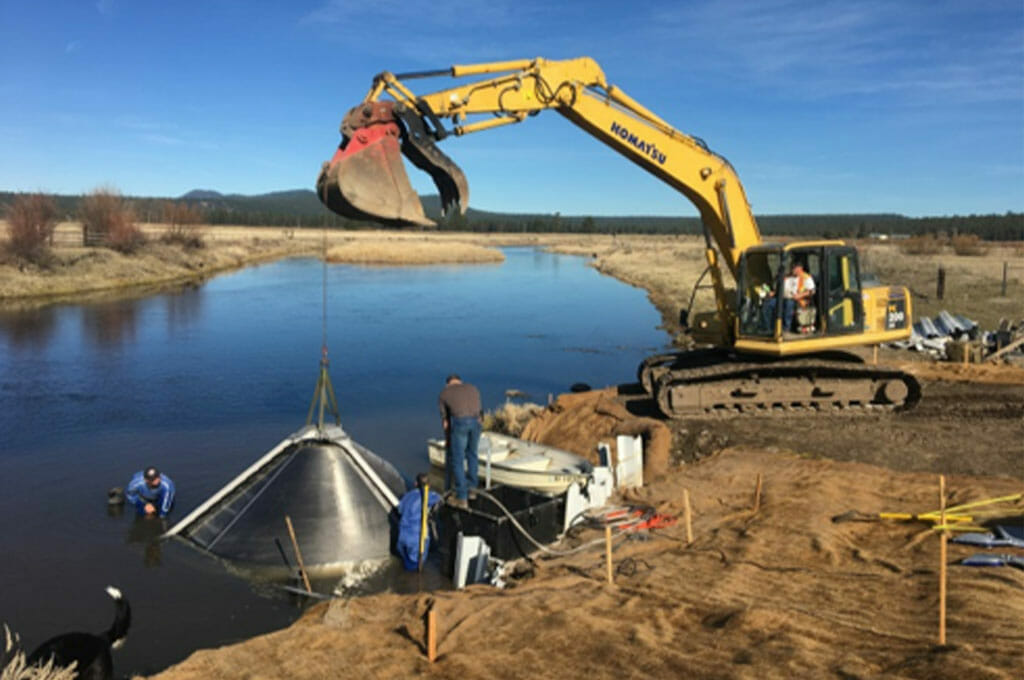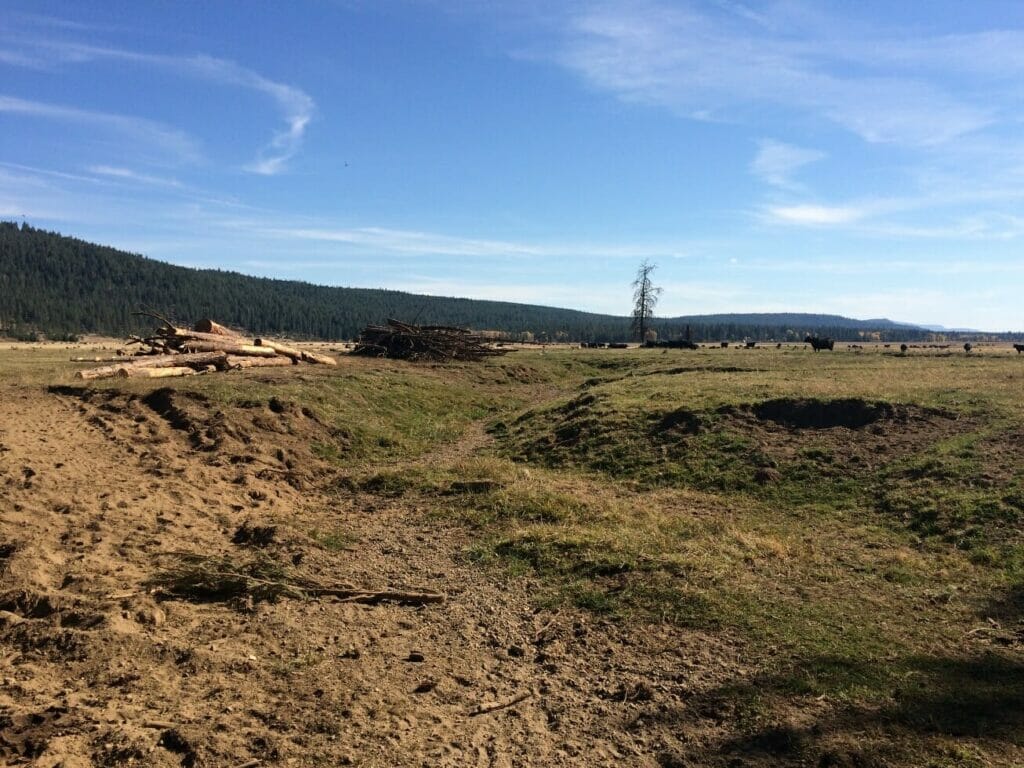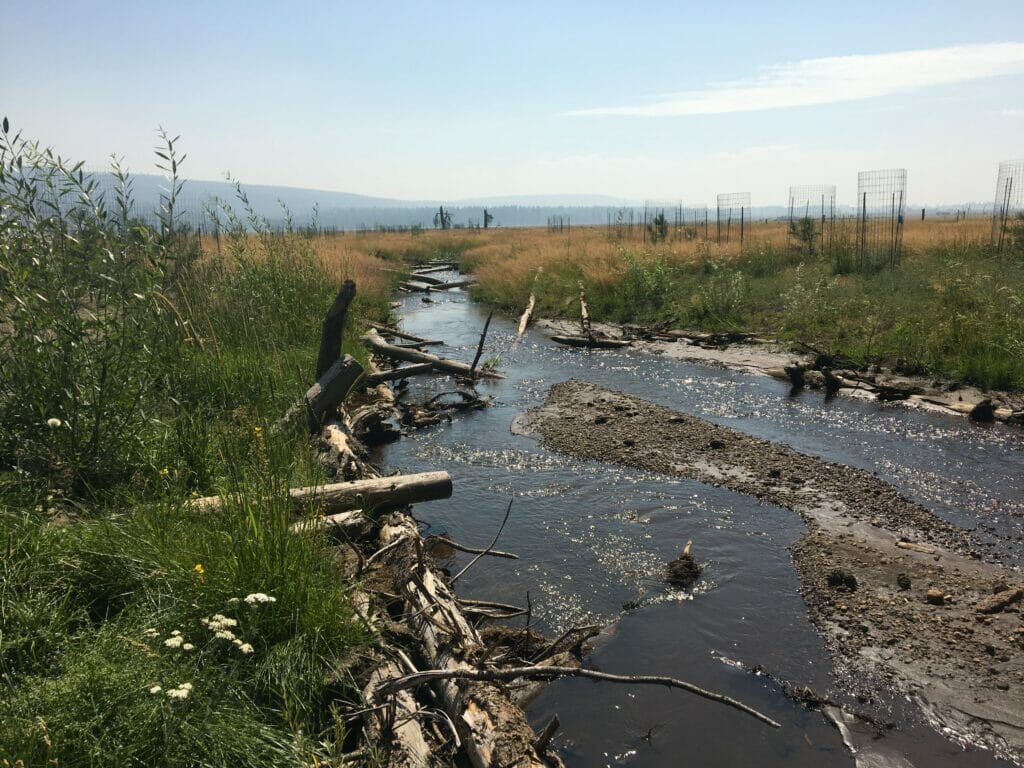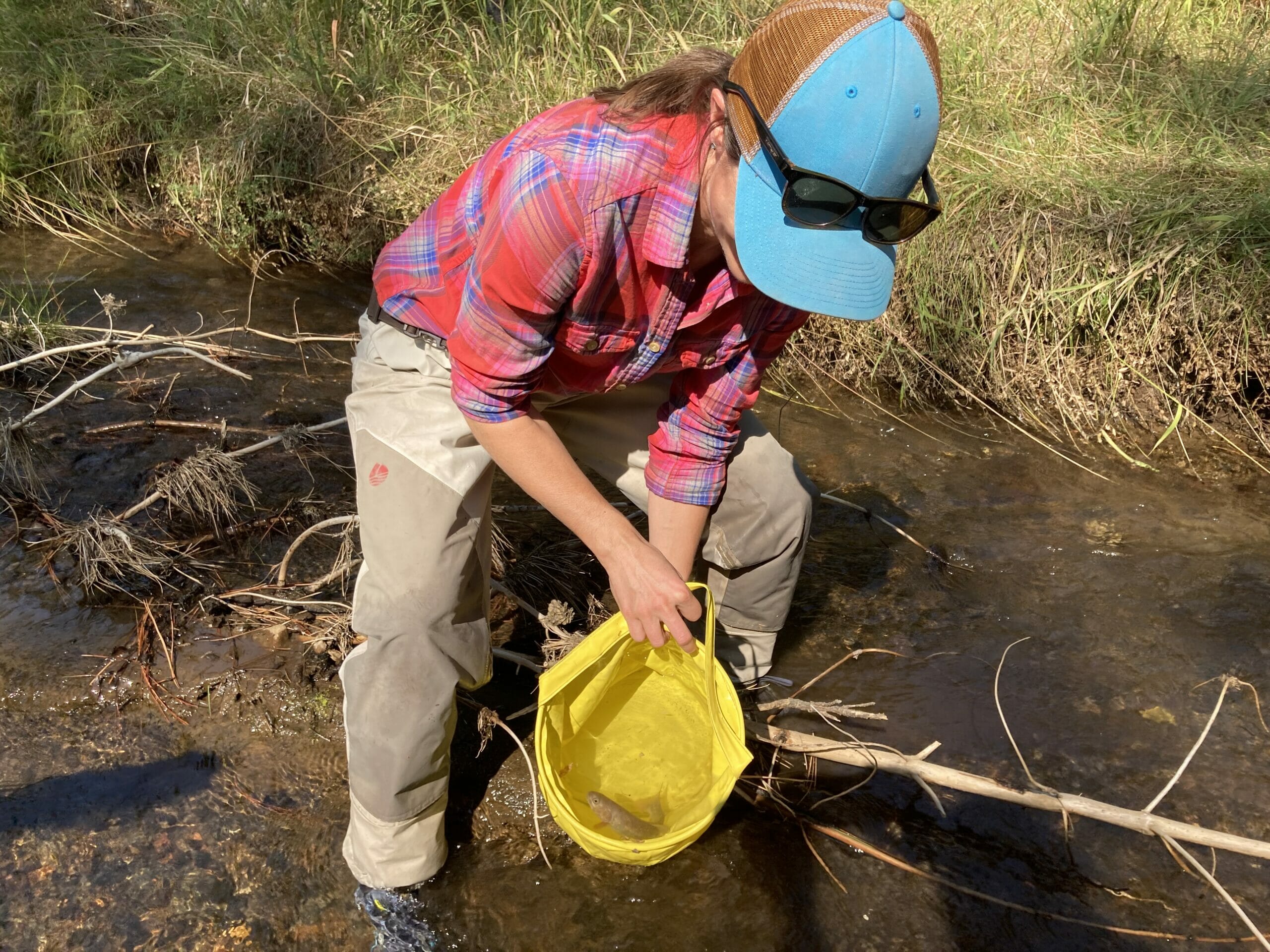TU’s Nell Scott with the first bull trout found in the reconnected reach of Oregon’s Sun Creek after completion of a TU-led restoration project, Upper Klamath Basin.
Senator Ron Wyden (D-OR) has introduced the Water for Conservation and Farming Act, a bill that will provide a major boost to some of Trout Unlimited’s highest watershed and fish conservation priorities.
The Water for Conservation and Farming Act would provide a new source of funding for restoration and improvement of water infrastructure, including essential dams and water delivery systems but also natural infrastructure such as riparian areas, floodplains and meadows. The bill also aims to better support and sustain biodiversity during periods of drought, which are becoming more frequent, prolonged and intense in the West due to climate change.

The provisions of this legislation were highlighted in today’s Senate Energy and Natural Resources Subcommittee on Water and Power hearing on Natural Infrastructure and Western Water Management. Go here to read TU’s letter submitted in support of this hearing, which includes a link to TU’s recent testimony before the House Natural Resources Committee’s Water, Oceans, and Wildlife Subcommittee regarding the return on investment of natural infrastructure projects in terms of job creation, economic recovery, and climate resilience.
Another provision in the Water for Conservation and Farming Act requires the Bureau of Reclamation to establish a new competitive grant program to design, implementation, and monitoring of conservation outcomes of habitat restoration projects that improve watershed health. And it would also extend and expand the government’s WaterSmart Program to promote water use efficiency, better water management and conservation, and improve the condition of natural water recharge infrastructure such as aquifers.
“TU appreciates Senator Wyden’s leadership in promoting the key role of natural infrastructure to support sustainable water use in the West through the introduction of the Water for Conservation and Farming Act,” said Laura Ziemer, TU’s Senior Counsel and Water Policy Advisor. “A recent USGS study found that between $2.2 and $3.4 million in total economic outputs are contributed to the U.S. economy for every $1 million invested in ecosystem restoration. Senator Wyden’s Water for Conservation and Farming Act invests in sustainable, rural, economic recovery.”

Chrysten Lambert, TU’s Oregon Director, oversees a variety of programs and projects that improve watershed resiliency to drought, fish passage, and restoration of natural water infrastructure. She said, “Watershed restoration benefits local communities and economies while building ecological capacity for climate resilience. We salute Senator Wyden’s continued strong support for water solutions that help people, agriculture, rural communities and Tribes, and Oregon’s famous salmon and steelhead streams.”
Lambert added, “The new programs and authorizations under the Water for Conservation and Farming Act are designed to invest in the nexus between our agricultural sector and healthy, free-flowing streams by supporting continued restoration of famous salmon and steelhead streams and the water needs of both high desert ranchers in eastern Oregon and Oregon’s coastal communities and farms. We need this kind of pragmatic and visionary approach to addressing our collective water needs in the West if we are to make our communities, farms and fisheries more resilient to drought and other impacts of the warming climate.”

Much of TU’s Western Water and Habitat Program work focuses on projects that deliver all of these benefits. In Oregon, a good example of the type of project that Sen. Wyden’s bill is intended to support is a major TU-led restoration project on Sun Creek, an important tributary to the Wood River that is home to one of the few remaining bull trout populations in the Upper Klamath Basin.
The Sun Creek Historic Channel Reconnection Project, completed in 2017, provides a migratory corridor for isolated bull trout and expands available habitat for native redband trout currently present in the Wood River. This project includes reconnecting and rebuilding two miles of historic stream channel, instream water transfers to increase flow in the new channel, and installing a fish screen on an irrigation diversion to prevent fish entrainment in irrigation ditches. It also includes riparian fencing and planting along the reconnected reach, and installation of irrigation piping to reduce irrigation withdraws.
For more information on TU’s restoration work in the upper Klamath Basin, go here, and to learn more about TU’s water work in the West, go here.



